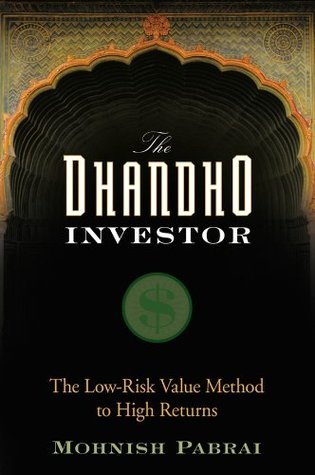More on this book
Community
Kindle Notes & Highlights
Never count on making a good sale. Have the purchase price be so attractive that even a mediocre sale gives good results.2
Tylenol scare, the Exxon Valdez oil spill, or the American Express “salad oil crisis” in the 1960s, have similar traits.
Suggested Percent of Bankroll to Be Bet on Each of Eight Simultaneous Bets
Most of the top-ranked business schools around the world do not understand the fundamentals of margin of safety or Dhandho. For them, low risk and low returns go together as do high risk and high returns. Over a lifetime, we all encounter scores of low-risk, high-return bets. They exist in all facets of life. Business schools should be educating their students on how to seek out and exploit these opportunities.
Whenever I make investments, I assume that the gap is highly likely to close in three years or less. My own experience as a professional investor over the past seven years has been that the vast majority of gaps close in under 18 months.
With these characteristics, funeral homes ought to trade at very high premiums and double-digit P/E ratios. Their cash flow has a very high degree of certainty. And yet, here was this bulletproof
There was no clear answer in July 2000 as to how Stewart was going to pay down its debt load and avoid default. Wall Street assumed the company would have to declare bankruptcy when it defaulted on its debt and tanked the stock. At the time, Stewart had about $700 million in annual revenues and owned about 700 cemeteries and funeral homes in nine countries, with the bulk of them in the United States. Stewart’s tangible book value was $4 per share. It was thus trading at half of book value. Since book value included hard assets like land at cost, it was likely understated.
share. The stock was trading at less than three times cash flow. It was also trading at about one-quarter of annual revenue.
Each underlying funeral home was an excellent business with lucrative and predictable free cash flow characteristics. The weak balance sheet of the parent company was the culprit.
this might play out. The risk of a permanent loss of capital is under 1 percent. It is a textbook example of a situation with ultra high uncertainty and ultra low risk. If presented with such a scenario, Wall Street will irrationally collapse the quoted value of the business. Always take advantage of a situation where Wall Street gets confused between risk and uncertainty. The results will usually be quite acceptable.
Wall Street could not distinguish between risk and uncertainty, and it got confused between the two. Savvy investors like Buffett and Graham have been taking advantage of Mr. Market’s handicap for decades with spectacular results.
Is it a business I understand very well—squarely within my circle of competence? 2. Do I know the intrinsic value of the business today and, with a high degree of confidence, how it is likely to change over the next few years? 3. Is the business priced at a large discount to its intrinsic value today and in two to three years? Over 50 percent? 4. Would I be willing to invest a large part of my net worth into this business? 5. Is the downside minimal? 6. Does the business have a moat? 7. Is it run by able and honest managers?
1. It has been less than two to three years since we bought.
We are unable to come up with a realistic intrinsic value with a very high degree of certainty. 3. Present offered price is well below our conservative estimate of present intrinsic value.
1. We are able to estimate its present and future intrinsic value, two to three years out, with a very high degree of certainty. 2. The price offered is higher than present or future estimated intrinsic value.
vagaries
The key to being a successful investor is to buy assets consistently below what they are worth and to fixate on absolutely minimizing permanent realized losses. Warren Buffett’s two main rules are:
stock went over $35 per share, and we were unloading as aggressively as we could without being over 20 percent to 30 percent of daily average volume or affecting the price. Our traders at Smith Barney did a wonderful job of letting the shares out without tipping our hand. Around mid-May, as equity markets around the world dropped significantly, USAP dropped from $36 to $23 per share. Once the stock went under $31.50 per share, Pabrai Funds stopped selling. As I write this, we’ve unloaded about 60 percent of our USAP holdings at an average gain of over 100 percent, and the remaining
lot of great fortunes in the world have been made by owning a single wonderful business. If you understand the business, you do not need to own very many of them.5 —Warren
“few bets, big bets, infrequent bets”—all
The best way to learn is to teach,


